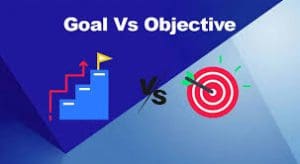The difference between a Goal and an Objective – it’s quite simple, really!
Source Of News
By Joel Ronchi, COO, 16th August 2022
A goal is an achievable outcome that is typically broad and long-term. An objective, on the other hand, defines the specific, measurable actions to achieve the overall goal. To sum it up, the main difference between a goal and an objective is that goals provide direction whereas objectives measure how you should follow that direction.
Why is this important when it comes to advice?
Goals create objectives. A client’s goals and objectives are a core foundation on which personal advice is built, along with the subject matter of the advice sought by the client and the client’s overall relevant circumstances.
From experience in viewing hundreds, if not a couple of thousand SOAs, there is still a tendency for goals and objectives to be reduced to generic statements that lack detail.
These “goals and objectives” are often based on the adviser’s own wording (or generated by SOA templates), rather than information genuinely reflecting the actual conversation has with client’s regarding their relevant personal circumstances.
ASIC states in Info Sheet 267 that:
“It’s good practice to capture (the client’s goals and objectives) in the client’s own words in the client file and in the SOA. For example, if a client says, ‘I want to sort out my super’, and then asks questions about how much superannuation they might need to retire, options for retirement income streams and possible timeframes, (the adviser) should record details of the client’s questions and (adviser’s) answers, and not just record ‘the client is seeking advice on superannuation’.”
Why is it important to clearly define “Goals & Objectives”?
RG175.248(c) states the process of quality advice may include an adviser helping a client identify “… prioritised, specific and measurable goals and objectives;”
ASIC supports advisers to help client’s define goals through discussion, from which the scope of the advice can be set, and appropriate strategies (and financial products) chosen.
RG244 indicates ASIC expects advisers to “(use their) judgement … and determine the scope of advice in a way that is consistent with the client’s relevant circumstances and the subject matter of the advice (the client is) seeking.”
This means the client’s goals and objectives help inform the appropriate scope of advice.
The scope of advice should reflect topics to be included in the SOA and those to excluded, based on the subject matter of advice sought by the client and the client’s relevant circumstances (including financial situation, goals & objectives).
In summary, to ensure the “personal advice equation” is appropriately executed, advisers should Identify and discuss a client’s goal/s through a discovery process, which should be documented/recorded and flow with consistency into the SOA.
————————————————————————————————————————————————————————————————————————————
Fourth Line is a rigorous RegTech risk management and compliance system for advice practices, dealer groups and other wealth management participants. Fourth Line uses algorithmic approaches to simplify the complexity in advice reviews whilst maintaining human oversight, empowering compliance teams to coach and develop strong advice behaviors through data driven insights from advanced analytics for adviser, practice/dealer group and industry benchmark comparison with centralised document storage and access to meet regulatory needs.
For information email: info@fourth-line.com.au


